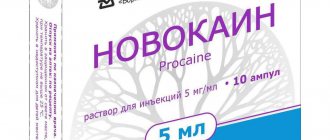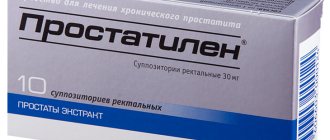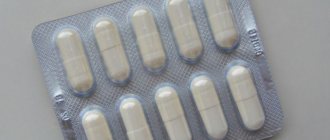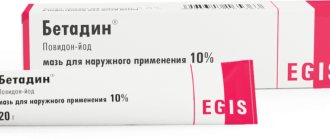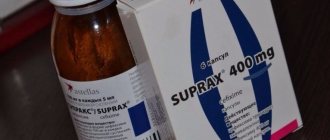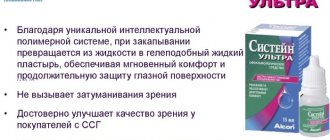The medicine Milgamma (injections) is a complex of neurotropic vitamins belonging to group B. In therapeutic doses, this vitamin complex is used in the treatment of diseases of the nervous system, nerve tissues, which entail processes that impair the conduction of nerve impulses or degenerative and inflammatory phenomena.
Vitamin B1 (thiamine)
Thiamine (B1) is responsible for normalizing carbohydrate metabolism in internal organs (liver, brain and living tissues). In addition, it is involved in the production of fatty acids and optimizes amino acid metabolism. An important function of thiamine is that it effectively reduces inflammation of the skin and improves the condition of the mucous membranes. Thiamine is involved in hematopoiesis and in the process of cell division, preventing the aging process of the body.
Thiamine is prescribed by specialists in the following cases:
- with liver disease;
- if the endocrine system is disrupted (consequences of obesity, diabetes);
- for eczema, psoriasis, pyoderma;
- in case of malfunction of the kidneys, brain and central nervous system;
- for gastritis, ulcers, pancreatitis and other gastrointestinal diseases.
Composition, release forms
The holder of the registration certificate Milgamma is the pharmaceutical company Woerwag Pharma, specializing in the development of biofactors, founded in Germany. The manufacturer of the drug is Solupharm Pharmazeutische Erzeugnisse. The packager of the finished dosage form can also be Russian.
The official instructions describe the appearance, dosage and composition of the injection solution - basic and additional. This is a transparent, homogeneous liquid of pinkish-red color, intended exclusively for injection into muscle fibers. Has a characteristic smell. Bottled in brown glass ampoules with a capacity of 2 or 5 ml. The ampoules are made of special light-protective glass with high hydrolytic stability. A large white dot is applied to the neck of the ampoule, indicating the location of the break. Milgamma ampoules are packaged in 5-cell plastic pallets, supplied with instructions and placed in an individual cardboard pack (contains 1, 2 or 5 pallets).
Vitamins are present in solution (1 ml) in the following quantities:
- Thiamine, better known as vitamin B1, 50 mg - is presented in the form of hydrochloric acid salt (hydrochloride).
- Pyridoxine, the bioactive form of vitamin B6, 50 mg – is also in solution in hydrochloride form.
- Cyanocobalamin, the main form of vitamin B12 entering the human body, 500 mcg is a natural biologically active organocobalt compound, whose structure is called cobalamin. It is an external (coming from outside) anti-anemic factor.
- Lidocaine, 10 mg is a local anesthetic (the effect is strong, felt almost instantly, the duration of anesthesia is up to 75 minutes) of the amide series, used in the form of hydrochloride, ensures painless injections, improves the penetration of vitamins.
The ampoules also contain a number of auxiliary components, these are:
- benzyl alcohol is a disinfectant;
- Potassium hexacyanoferrate is a strong oxidizing agent;
- caustic soda – alkali, acidity regulator;
- sodium polyphosphate – emulsifier;
- purified water - a solvent, brings the mixture to a given volume and concentration.
For information: Maclura or Adam's apple and cooking recipes.
Vitamin B6 (pyridoxine)
Pyridoxine (B6) is a water-soluble element that regulates metabolic processes and normalizes blood circulation. Pyridoxine is involved in the synthesis of molecules and the breakdown of carbohydrates. In addition, vitamin B6 reduces the risk of obesity, diabetes and the development of cardiovascular diseases. The level of cholesterol in the human body depends on the amount of vitamin B6. The role of vitamin B6 is indispensable in the synthesis of new red blood cells, i.e. this component is actively involved in the restoration of hematopoietic function. Like the other vitamins of the Milgamma complex, vitamin B6 affects the strengthening of the human immune system. In addition, a sufficient amount of pyridoxine protects against depression, relieves anxiety, and ensures calm.
Vitamin B6 is prescribed:
- patients with atherosclerosis, anemia and diabetes;
- pregnant women with toxicosis;
- teenagers with problems with improper functioning of the sebaceous glands.
Contraindications
The drug is well tolerated, but there are still contraindications for use:
- Allergic reaction to any component, especially vitamins
- Pregnancy and lactation;
- Children under 16 years of age;
- With exacerbation of heart failure.
Drug interactions:
- Treatment with ftivazid, isoniazid, penicillamine, cycloserine reduces the level of B6 in the body and symptoms of its deficiency appear;
- Pyridoxine reduces the effectiveness of levodopa;
- Cyanocobalomin is destroyed in the presence of heavy metal salts;
- Thiamine becomes inactive in the presence of mercury, sulfate solutions, and carbonates.
Milgamma analogues:
- Neurobion from Nycomed;
- Neuromultivitis;
- Combilipen;
- Kopligam;
- Vitaxon;
- Binavit.
During pregnancy and lactation, B 1.6 are found in breast milk. Elevated levels of cyanocobalamin can suppress lactation. Therefore, their appointment during this period can be made after a detailed assessment of the harm and benefit to the body of the fetus or child. Since daily intake of 16 mg of B1 and 26 mg of B6 into the body of a pregnant woman is considered safe, the drug Milgamma is not indicated during these periods of a woman’s life.
The daily requirement for B1 is 1.3 – 2.6 mg.
She grows at:
- Elderly;
- Nursing and pregnant women;
- When smoking;
- Hyperfunction of the thyroid gland;
- Stress;
- Alcohol abuse;
- Heavy metal poisoning.
If there is a deficiency of vit. B1 develops severe Beri-Beri disease.
Signs of its deficiency are:
- Hallucinations;
- Decreased memory for recent events;
- Decreased appetite, intestinal motility;
- Shortness of breath, pain in the heart, palpitations;
- Later, symptoms of damage to peripheral nerve endings appear.
Vitamins B 1 and 6 stimulate the absorption of magnesium by the cell.
Daily requirement for B6:
- For an adult it is 1.5 – 3 mg.
- For children under one year of age, 0.3 – 0.6 mg.
- For pregnant women 2 – 2.2 mg
Lack of B6 in the body is a risk factor for atherosclerosis and anemia.
Deficiency manifests itself:
- Retardation;
- Irritability;
- Nausea;
- Magnesium deficiency;
- Dry dermatitis;
- Polyneuritis of the lower and upper extremities;
- Conjunctivitis.
Cyanocobalomin (B12) is actively involved in cell division, hematopoiesis, and metabolism. 2 – 3 mcg is the daily requirement of B12 for adults. The norm for children is 0.3 - 1 mcg. For nursing and pregnant women 2.6 - 4 mcg/day.
Hypovitaminosis B12 manifests itself:
- Headaches;
- Fatigue;
- Shortness of breath during exercise load;
- Dizziness;
- Decreased appetite;
- Numbness;
- “Crawling goosebumps” all over the body.
- The most common cause is atrophic gastritis, gastroenteritis.
For children:
- The children's body is especially sensitive to vitamin deficiency.
- Thiamine deficiency can cause death in an infant.
- Supplemental thiamine intake stimulated cognitive development in young adults.
- Vitamin B6 deficiency leads in infancy to the development of disturbances of consciousness with seizures due to low synthesis of inhibitory mediators in the brain.
- In addition, its deficiency leads to the development of anemia, growth retardation, atrophy of lymphoid tissue, a decrease in leukocytes, antibodies, and a decrease in resistance.
- B12 deficiency in children causes immunodeficiency, megaloblastic anemia, and deterioration of cognitive abilities.
- It is a factor in the development of cerebral circulation disorders and atherosclerosis.
- However, correction of vitamin deficiency in children under 16 years of age is recommended only through nutritional methods and medications in the amount of daily requirements.
- Under 16 years of age, the use of this medication is not recommended due to the high concentration of vitamins in the drug and the presence of benzene alcohol in ampoule form.
- Adolescents over 16 years of age can be prescribed these vitamins to cover deficient conditions in the same doses as for adults - 1 dr. 3 times a day.
- Also used in combination therapy of acute and recovery periods of poliomyelitis.
- In children, oral forms are preferred (due to the alcohol content in the ampoule form).
- The duration of treatment for adolescents with neuropathies due to type 1 diabetes mellitus is somewhat shorter than for adults - up to 3 - 5 weeks.
Read about how to treat lower extremity neuropathy at home here.
Indications:
- Malabsorption syndrome;
- For nutritional deficiencies;
- Alcohol abuse;
- Polyneuropathy of various etiologies;
- For the treatment of pain syndromes.
Interaction with alcohol:
- Alcoholism often develops thiamine deficiency. It is associated with eating disorders during this period, active intake of carbohydrate foods. In addition, high doses of vitamin B1 are required for the absorption and transformation of alcohol in the body. All this leads to a deterioration in myelin synthesis and the development of alcoholic neuropathy.
- The use of Milgamma in these patients has been proven to reduce the manifestations of neuropathy and dementia within 12 weeks of regular use of the drug.
Side effects of the drug:
- Local allergies: skin itching, dermatitis;
- Dizziness, headache;
- Anaphylactic shock;
- Arrhythmias and conduction disorders;
- Nausea, vomiting;
- Difficulty breathing;
- Drowsiness, disturbances of consciousness;
- Sweating.
Overdose symptoms
- Constant intake of pyridoxine at a dose of more than 200 mg/day for 2 months. and longer, can provoke the occurrence of reversible peripheral neuropathy of any localization;
- Increased side effects.
There is no specific antidote. Carry out intestinal lavage, gastric lavage and symptomatic therapy.
Price of drugs:
- Milgamma (ampoules of 2 ml) No. 5 – 270 rub.
- No. 10 – from 420 – 460 rub.
- No. 25 – from 1040 – 1160 rub.
- Milgamma compositum tablets 30 pcs. – from 540 to 640 rub.
- Milgamma tablets 60 pcs. - from 954 – 1100 rubles.
Vitamin B12 (cyanocobalamin)
Cyanocobalamin (B12) helps accelerate the breakdown of proteins, fats and carbohydrates. Responsible for the synthesis of leukocytes, which are involved in protecting living tissues from foreign elements. Reduces cholesterol levels in the human body. Vitamin B12 helps normalize sleep and optimize the production of melatonin, the sufficient amount of which determines the sleep-wake cycle.
Indications for the use of cyanocobalamin are as follows:
- radiculitis;
- cirrhosis of the liver;
- polyneuritis;
- skin diseases (dermatitis, psoriasis);
- radiation sickness;
- bone injuries;
- acute and chronic hepatitis;
- bone injuries;
- radiculitis and others.
Milgamma indications for use
The drug Milgamma is prescribed to patients experiencing a deficiency of B vitamins, which leads to neurological diseases:
- neuritis;
- neuralgia;
- polyneuropathy - diabetic, alcoholic, etc.;
- myalgia;
- radicular syndromes;
- retrobulbar neuritis;
- herpes zoster;
- facial nerve paresis.
The range of indications for the use of this medicine is quite wide. In addition to the treatment of osteochondrosis, Milgamma is also successfully used in the treatment of diseases such as vegetative-vascular dystonia, as well as a number of diseases of internal organs associated with a lack of B vitamins. Depending on the phase of the patient’s disease (acute pain syndrome or mild pain), the doctor prescribes either vitamins in Milgamma tablets or Milgamma injections (injections).
Storage conditions of the drug according to the instructions
If you follow the instructions for the drug, it is best to store Milgamma in ampoules in dark places , completely protected from daylight: in a cabinet, first aid kit, or original packaging. Direct sunlight is especially dangerous for the drug, since under their influence the active components of Milgamma deteriorate many times faster. Well, as for the most acceptable storage temperature of the drug, it will be individual for each form: for a solution - no higher than 15 degrees, and for tablets - no higher than 25.
Therefore, many doctors, when prescribing such a medicine, strongly recommend storing Milgamma not in the refrigerator, as many patients do, but in a special first aid kit, or in a tightly closed cabinet. At the same time, it is best to leave the ampoules in the original box in order to increase the shelf life of Milgamma to the highest level allowed by the manufacturer (for a solution the maximum shelf life is 2 years, and for tablets - 5 years).
Mode of application
In cases of severe pain, treatment begins with 1 injection (2 ml) per day. After the acute phase of the process or in case of mild pain syndrome, the drug is administered intramuscularly, 1 injection 2-3 times a week.
Under the supervision of a physician, a subsequent transition to treatment with the oral form of Milgamma® is possible. In this case, it is recommended to take one Milgamma® tablet 3 times a day.
The use of injections is more effective in the presence of systemic diseases, while tablets are recommended by doctors for maintenance therapy and for preventive purposes.
Interaction
If vitamin B1 is mixed with sulfate solutions, it completely disintegrates.
Inactivation of thiamine (benfotiamine) is noted in the presence of acetates, mercury chloride, iodides, carbonates, riboflavin , tannic acid, ferric ammonium citrate, penicillin, metabisulfite.
Pyridoxine in therapeutic doses can reduce the effect of levodopa, therefore it is not used with levodopa and medications containing it. There is also interaction with Penicillamine , Cycloserine , Isoniazid .
Cyanocobalamin is inactivated in the presence of heavy metal salts. Riboflavin also has a destructive effect on it, especially with parallel exposure to light.
Side effects
Milgamma has a beneficial effect on the body, saturating it with essential elements and vitamins. But we must not forget that this is a medical drug and should be taken only as prescribed by a doctor. Before taking a course of taking the drug (whether it be tablets or injections), the doctor must make sure that the patient does not have an individual intolerance to one of the components of the drug
Side effects from taking Milgamma can be in the form of allergic reactions - rash, itching, as well as increased sweating, dizziness, arrhythmia or convulsions. All these phenomena can occur with sudden administration of the drug or if the dosage is not observed.
How to identify a spoiled drug
Having considered the question of where to store Milgamma injections, you can safely move on to the next, no less important question: how to identify a spoiled drug? Milgamma, like its close analogues (Trigamma, Compligam and Combilipen), have an extended shelf life (4-6 months longer than indicated in the drug instructions). This means that any signs of an expired solution will definitely not be observed.
However, it is still possible to identify a spoiled solution, provided that it has spoiled as a result of improper storage (before the expiration date). And the first signs of a spoiled drug will be : the appearance of sediment in the ampoule and a change in the characteristic color of the solution. Well, to prevent such situations from happening, Milgamma should be stored exclusively according to the rules dictated by the manufacturer of the drug.
Vitamins Milgamma: reviews from patients and doctors
By analyzing the totality of the complex of vitamins that make up Milgamma, you can understand the benefits this drug brings to the human body. It is the B vitamins that have a positive effect on the overall strengthening of the immune system and have a powerful therapeutic effect in the treatment of diseases of the central nervous system and musculoskeletal system. Thanks to the use of Milgamma, specialists achieve quick relief from acute pain; the treatment brings a long-term positive effect. In addition, experts recommend taking Milgamma vitamins for various diseases of internal organs, since this replenishes the elements and nutrients that a weakened body lacks.
With alcohol
Milgamma is prescribed after alcohol intoxication in order to restore the body. At the same time, alcohol and Milgamma, both in injections and tablets, should not be consumed. Despite the fact that the compatibility of this medicine with alcohol is not described in the official instructions, such a combination completely neutralizes the positive effect of using the drug. Also, a number of side effects can be caused by combining alcohol and lidocaine: headache , drowsiness , anxiety .

